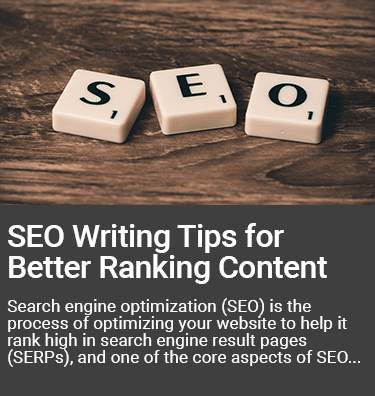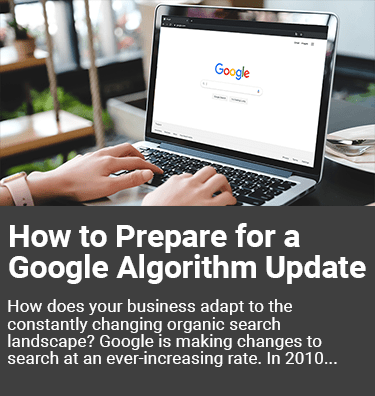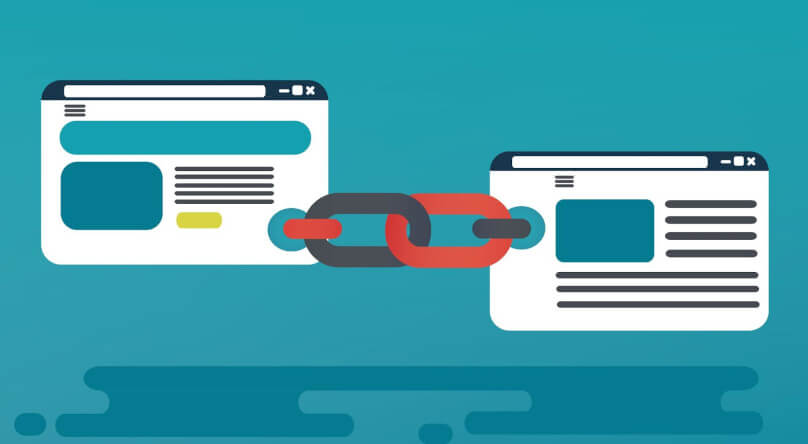
How to Build a Media List with SEO in Mind
Up until recently, Public Relations (PR) and Search Engine Optimization (SEO) were two completely separate operations. SEO was solely about optimizing the technicalities and performance of one’s site, while PR strived to get eyeballs on branded content and newsworthy announcements. But believe it or not, PR and SEO share many similar objectives, and digital marketing agencies like Effective Spend have tapped into the success clients can have when marrying the two disciplines together.
Before we dive in, it’s vital to understand the significance of each industry on its own. By definition, SEO is the process of optimizing the quality and quantity of traffic to a website or a web page from search engines. From a high-level, our clients are typically aiming to increase search engine rankings for top keywords, website traffic, new users, and other key metrics that ultimately lead to conversions. On the other hand, traditional PR is focused on earning favorable media coverage and building goodwill among key company stakeholders but is typically less measurable. It involves strategies like pitching newsworthy, timely content to relevant reporters to increase brand awareness and foster a positive brand reputation with the media. Unlike SEO, conventional PR is trickier to quantify and track. While more conventional measurements like share of voice and quality of coverage are still valuable, tapping into SEO metrics offers a new way to track client success. And thus,“Digital PR” is born.
Effective Spend’s Digital PR team executes traditional PR practices through an SEO lens to secure earned media coverage that also positively impacts organic SEO metrics, thus producing more tangible, measurable results. To help illustrate how the PR team uses SEO, this piece will dive into how our team builds media lists, step-by-step, with an SEO checklist in mind.
How do link-building contact lists differ from Digital PR media lists?
Before jumping in, it’s critical to address the difference between link-building and Digital PR contact lists. SEO link building is largely focused on securing a high-quality backlink to a priority page on the site and is less concerned with the website being a “traditional” media outlet such as Forbes or the New York Times. Ultimately, any website that is relevant and can provide value from a link building perspective will be on an SEO link building list. For instance, a company blog that is relevant to our client’s industry or offering could be an excellent candidate for link building initiatives. With SEO link building, often the goal is to secure a link insertion or feature in an existing piece of content.
On the other hand, Digital PR outreach involves targeting more traditional media outlets such as news sites, digital magazines, bloggers, or trade publications that fit the brand and will provide quality coverage in addition to high-quality backlinks. As opposed to SEO link building, Digital PR outreach often involves pitching a net-new piece of content like a product review, an expert interview or byline, etc. Typically, executing link building outreach is more straightforward and evergreen, while conducting Digital PR outreach is more of a timely and comprehensive lift. While neither approach is “better” or secures more links than the other, it’s crucial to understand when each is appropriate. For instance, a product launch would be best supported by Digital PR outreach tactics, while SEO link building would be most beneficial when trying to build links to a particular page on the client’s website.
By thinking about SEO and Digital PR through the other’s lens, our team is able to build out thorough media contact lists that move the needle for both PR and SEO goals.
What should I look for when building a Digital PR media list?
Now that we’ve established the foundation for Digital PR outreach, we’ll address the top things to consider when building a media contact list with SEO in mind. In order to narrow down your search and secure the highest quality coverage possible, you’ll want to go through several checkpoints to determine if a website or publication is a good fit. This piece will highlight the top most important attributes to consider, and what tools will be helpful throughout the process.
Site Authority
First and foremost: check to see if your target websites are considered authoritative. From a high-level, site authority is based on a domain’s relevance, speed, and overall quality. While there’s no official “authority score” reported by Google, Domain Authority and Domain Rating scores, reported by Moz and Ahrefs respectively, have been accepted as industry-standard measurements and are important to keep in mind. Moz’s Domain Authority (DA) is a search engine ranking score that predicts how likely a website is to rank in the search engine results pages (SERPs). DA scores range from 1-100, with 100 being the most authoritative score and therefore the most likely to rank. Similarly, Ahrefs’ Domain Rating (DR) shows the strength of a website’s backlink profile compared to others on a 100-point scale. Thus, websites with top-performing content that drive backlinks will rank higher on both of these scales. It’s important to note that a website’s DA and DR scores are usually not the same, so both should be taken into consideration.
When evaluating site authority while building a contact list, your clients’ own authority scores are important to keep in mind as well. For clients with smaller or newer backlink profiles, you might be less critical when evaluating potential outlets and their authority scores. However, with clients that have an extensive backlink profile and a strong authority of their own, it’s key to make sure each outlet would provide value and bolster their SEO. For example, if the site you are hoping to build links to and earn coverage for is relatively small and has an authority rating below 30, then you should target websites with a rating of 30 or above. However, for more authoritative sites, you may want to strive for higher quality, more authoritative sites with a higher rating.
Link Type
Dofollow and Nofollow
When assessing the quality of a potential outreach target, the types of links they use on their site are also an important factor. When scanning a website, you’ll first want to evaluate if their links are dofollow or nofollow. A dofollow link is ideal and is the link that will pass the most authority onto that website. On the other hand, a nofollow link tells the search engine not to follow that outbound link and will not pass on the “link juice” that is directly correlated to improving your client’s search rankings and site authority. You can swiftly identify which is which by downloading the NoFollow Chrome extension, which will outline nofollow links in red. Another option is to inspect a link in the source code of the page and look for the tag rel=”nofollow”.
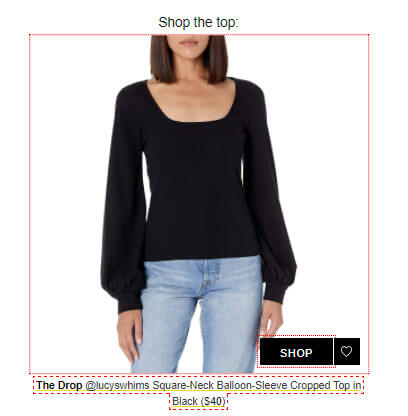
Nofollow link identified by NoFollow Chrome Extension
UGC and Sponsored
Some other tags you might come across are rel=”ugc” and rel=”sponsored”. UGC stands for “user-generated content” and helps Google determine when a link has been generated by a user. You might see a UGC link in a community forum or the comment section of a blog post. On the other hand, sponsored link attributes were created to help Google decipher promotional links from “untrustworthy” content on the web. All in all, these attributes provide hints that help determine how different backlinks will impact site authority and rankings. While all links can add some value, dofollow links remain the top way to move the needle for a client’s SEO goals.
Affiliate Links
Lastly, another link to keep an eye out for when surfacing outreach contacts is an affiliate link. Affiliate links are unique links that bloggers or reporters can use to earn a commission with a product recommendation or feature if a viewer makes a purchase. Affiliate links are predominantly something to keep an eye out for when you are conducting outreach for e-commerce clients.
There are two types of affiliate links – links that lead to a product on a third-party retailer’s website such as Amazon, Walmart, or Sephora, or a link that leads directly to the seller’s site, but redirects through a tracking program before arriving at the final URL destination. For an affiliate link that redirects before taking a user directly to a seller’s site, it’s uncertain how much “link juice” that link does or does not provide. However, we do know they pass less link credit to the receiving page than a direct link would, making them less desirable.
You can quickly identify an affiliate link by simply clicking on it and taking a look at the URL that pops up. If all of the links on a blog or online outlet go to a third-party retailer, like Amazon, then you can be fairly certain they are using affiliate links and these will not be helpful for SEO-focused link building. However, you may also come across affiliate links that redirect through a program like Shareasale before taking the user to the final destination page. In this case, it’s vital to utilize extensions like Redirect Path to spot when a link is going through a third-party site.
If a website only provides affiliate links to third-party retailers and part of your end goal is to build SEO value with your press wins, then we do not recommend adding them to your outreach list. If a website uses affiliate links but they still go to the direct retailer, then it may be worth including them on your outreach list, but keep in mind that a redirecting affiliate link will provide less of a link “punch” than a basic, direct backlink.
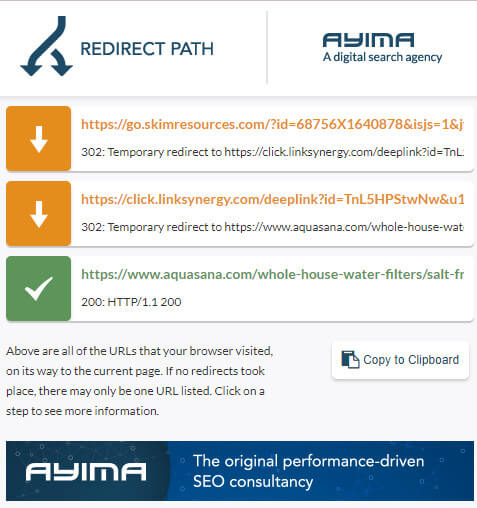
Affiliate link via Redirect Path
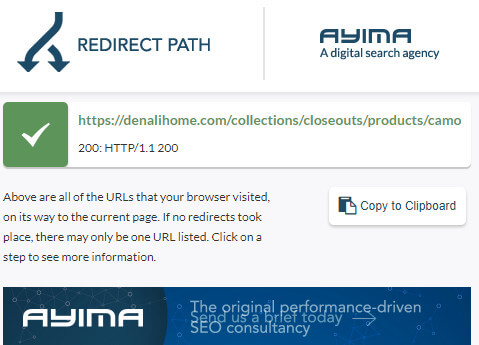
Normal product link via Redirect Path
Relevancy
It may seem obvious, but an outlet’s relevancy is essential in securing quality, meaningful coverage and backlinks for your client. One end-goal of any press coverage is to ultimately bring more users to the site and hopefully with that, drive conversions. It’s crucial to be mindful of your client’s product and/or service, and who their target demographic is when surfacing contacts for your media list. You’ll want to pull outlets that share a similar target audience as your brand and provide content that will resonate with their readers. For instance, a skincare client might perform best in a lifestyle magazine or product review blog that has a readership that is young and passionate about beauty trends.
Relevancy is also key from an SEO standpoint. If the referring domains you secure links from are relevant to your industry on top of being high quality, this will play a major role in building your site’s authority and reputation in the eyes of Google. To help gain a better understanding of what each outlet’s audience is, sort through and read some of the content on their website to determine if your client is the right fit.
A tool that is incredibly useful in narrowing down potential placements is Cision. Cision is well-known for its robust media database, providing contact information for publications and writers. It also offers an abundance of parameters that can help specify and narrow down your search for targets to reach out to. You can utilize filters such as reach, subject, region, medium type, and more to sort through thousands of potential outlets and writers.
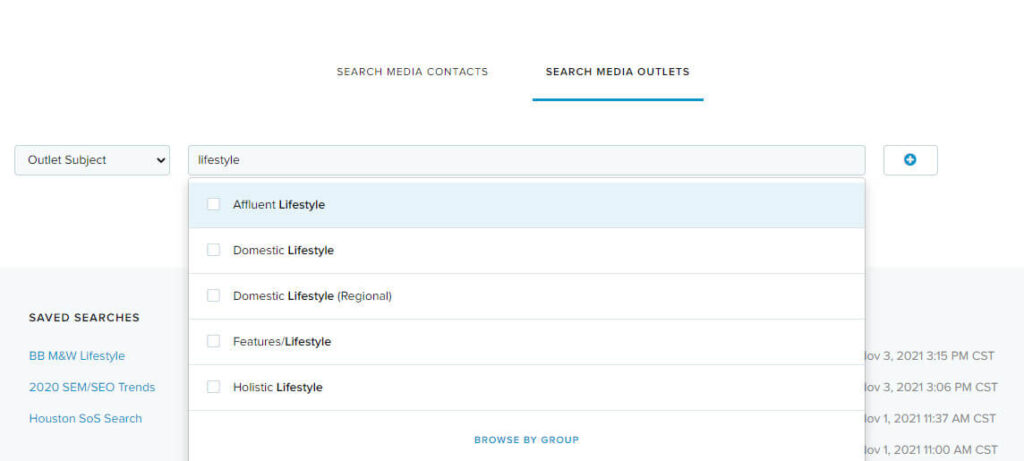
Site Quality
Last, but certainly not least, is evaluating a website’s quality. There are endless variables that go into determining this (check out Google’s quality rater guidelines for more information), but we’ll highlight the most important for both SEO and PR purposes. User experience, which is usually determined right off the bat, is the first indicator of a solid quality website. Do their pages load quickly, or are you hit with a never-ending spinning wheel? Is the website laid out in a clean, organized way? The quality of an outlet’s user experience can make or break the value of your press coverage.
It’s also critical to take note of the ad placements in the outlet, which can be a key determinant in identifying “pay to play” link building websites. Pay-to-play websites involve paying a fee to feature your brand, as opposed to securing organic coverage. It’s important to avoid these types of sites when executing Digital PR and quality link building initiatives. If the website’s pages are covered in advertisement banners, discuss an extremely wide range of topics, and feature mostly stock images, you’re likely on a pay-to-play website. You’ll also want to look out for sites that explicitly require payments for “link inserts” or “guest posts”. You can detect this by doing some digging on the website, and looking out for pricing documents or other pages that discuss partnership terms. If, and when, you come across these types of sites, it’s best to leave them out of your media list. While it may seem tempting to just pay for a link insert or guest article, getting links from low-quality, spammy sites can potentially hurt your client’s SEO.
Set your client up for success with SEO-driven media lists
Take your client’s PR presence to the next level by integrating long-established outreach tactics with modern SEO best practices. By using our media list checklist and securing beneficial, high-quality coverage, you can gain invaluable exposure AND see measurable results. A company’s digital presence will only continue to be more vital for their brand, and Digital PR can pave the way to their success.





